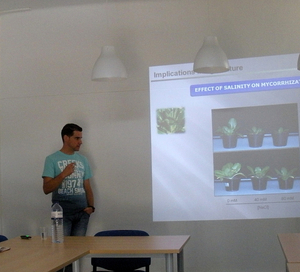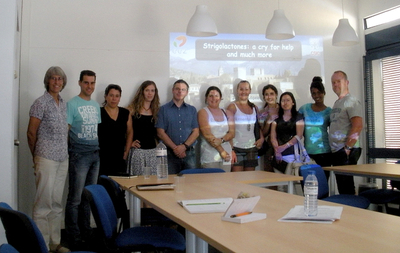Home - Mission / News/Events / Seminars at the Chair / Strigolactones: a cry for help and much more

Strigolactones are multifunctional molecules involved in several processes outside and within the plant. As signalling molecules in the rhizosphere, they favour arbuscular mycorrhizal (AM) symbiosis establishment, but they also act as host detection cues for root parasitic plants.
Dr. Juan A. Lopez Raez (second left) is a Tenured Scientist en Estacion Experimental del Zaidin (CSIC) in Granada at the Soil Microbiology and Symbiotic Systems department.
Strigolactones are multifunctional molecules involved in several processes outside and within the plant. As signalling molecules in the rhizosphere, they favour arbuscular mycorrhizal (AM) symbiosis establishment, but they also act as host detection cues for root parasitic plants. Interestingly, this dual role of strigolactones in the rhizosphere could be used to develop new strategies to control parasitic weeds. As phytohormones, it has been suggested that SLs would play a pivotal role in plants as modulators of the coordinated development of roots and shoots in response to nutrient deficient conditions. Accordingly, they are involved in the regulation of plant architecture, adventitious rooting, secondary growth and reproductive development, and novel roles are emerging at a fast pace. We are interested in analyze the effects of different stress conditions (both abiotic and biotic) on strigolactone production and regulation, and how this fact affects AM symbiosis establishment. On the other hand, we are investigating new functions of strigolactones in plants such as their involvement in defence responses.







